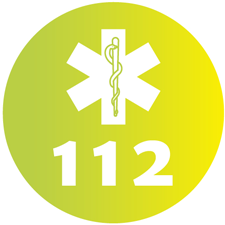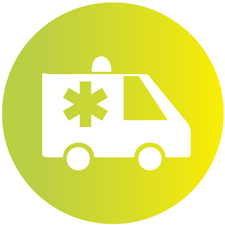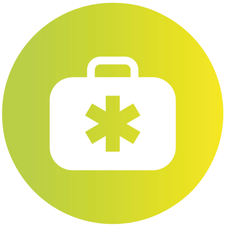We bring people safely from A to B. Sometimes it is vital that this happens quickly. But not all of our journeys are urgent. A quarter of our journeys involve routine, scheduled transportation. For example, when we transport patients to hospital who can only be transported lying down.

Urgent A1-journeys
Highest urgency. This may be a life-threatening situation. The ambulance drives to the emergency scene with flashing lights and siren on. The ambulance usually arrives within 15 minutes of the call.

Fast A2-journeys
An urgent situation that is not immediately life-threatening. The ambulance usually arrives within 30 minutes of the call.

Planned B-journeys
Ambulance care is needed, but not urgent. In many cases, the transfer can be planned in advance. This means that the patient and hospital can agree a suitable time for collection. This covers transport between hospitals, from home to an outpatient clinic, or back home following hospital treatment.
